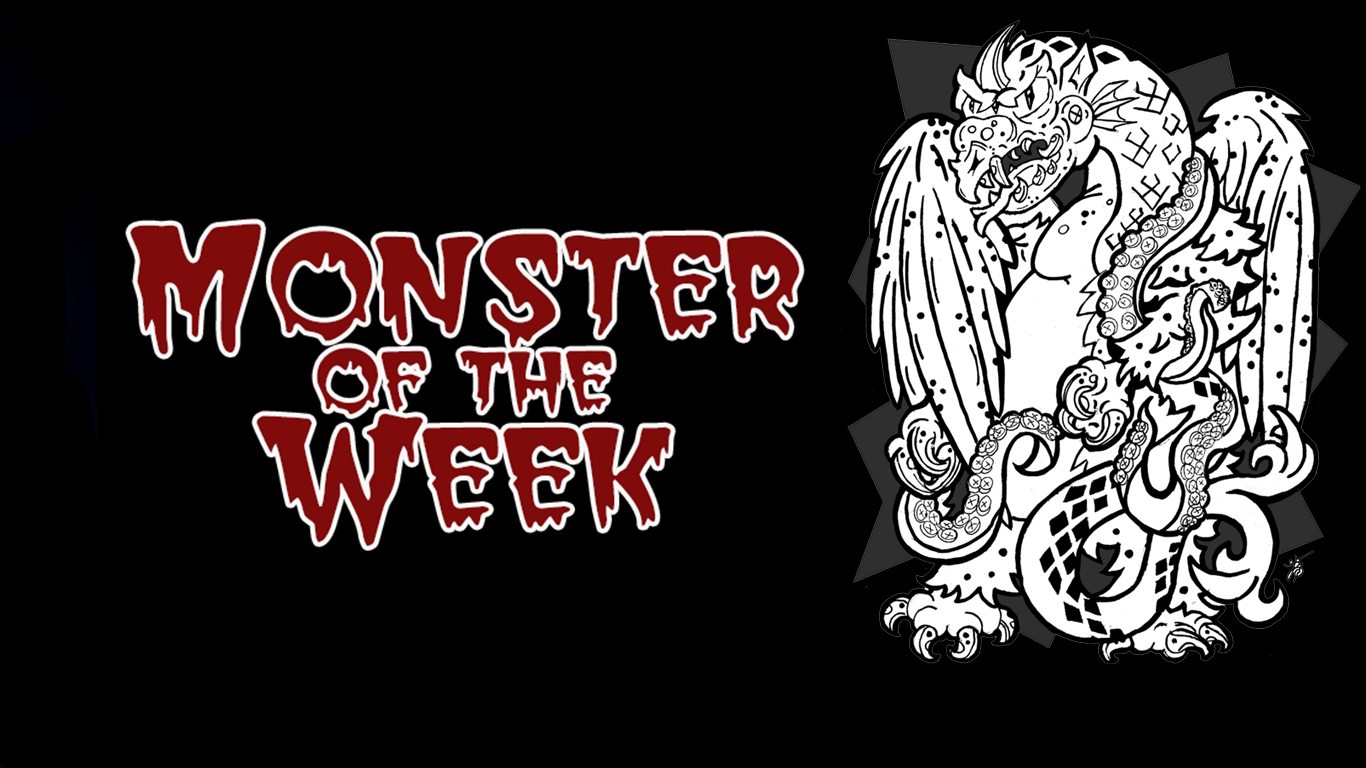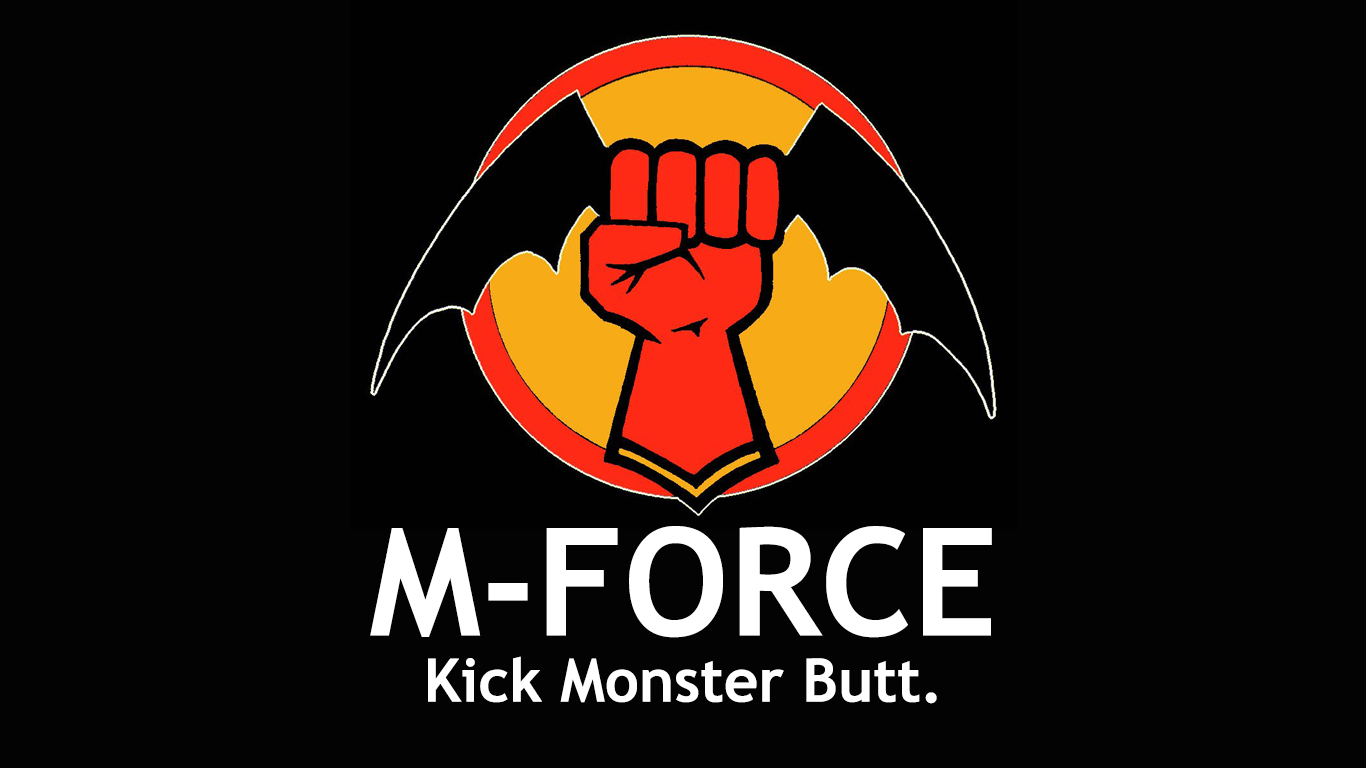We may earn money or products from the companies mentioned in this post.
Also Known As: Schneller Geist (German for “quick spirit”), Schnellegeister
Description: The snallygaster is a large flying reptile with feathered wings and seven octopus-like tentacles hanging from its neck just below the beak. The creature’s beak, which is full of razor-sharp teeth is often described as metallic in appearance, but is actually made of bone and keratin just like a bird’s. The snallygaster has a single large eye in the center of its forehead, four legs ending in sharp talons, and a tail that measures nearly 20 feet long. The snallygaster’s leathery skin ranges from dark brown to yellow and sometimes has darker stripes or other markings. It’s screech sounds like “a cross between a tiger and a vampire,” according to one witness.
BMA Classification: The snallygaster is classified as monster by the Bureau of Monster Affairs.
Powers: Despite its large size, the snallygaster is capable of almost silent and extremely fast flight, which often allows it to ambush prey before the victim is even aware of potential danger.
Vulnerabilities: Though the snallygaster is a very powerful opponent, it can be killed with conventional weapons.
Biology and Habitat: Very few specifics are known about the snallygaster’s habits and life cycle. They seem inhabit heavily forested mountain regions. While there have been snallygaster reports throughout the U.S., nearly all confirmed sightings have been in and around the Blue Ridge Mountains, mostly in Maryland. Most experts suspect that this is the home to the United States’ only breeding population of the creatures, and that reports from elsewhere represent incorrectly identified creatures or individual snallygasters who have strayed from their traditional stomping grounds.
Some reports indicate that snallygasters are vampiric, but more reliable research suggests that, although they start by drinking the blood of their kills, they eventually devour the entire body. snallygasters are carnivorous and are said to be especially fond of human flesh and chickens. Numerous tales exist of people finding snallygaster eggs (and the creature’s avian and reptilian traits suggest that this is likely), but reputable researchers have yet to get their hands on one. snallygasters are estimated to live between 20 and 30 years on average. However, since the estimate comes from researchers attempting to use potentially unique traits (such as scars and unusual coloration patterns) to match specific snallygasters to specific sightings, its reliability is very much in question.
Sightings: There have been hundreds of snallygaster sightings in Maryland since the 1700s, so we’ll only list the most well-documented and interesting, as well as the most reliable sightings from other parts of the country.
- There was a rash of sightings in Franklin County, Maryland in 1902.
- In January of 1908, footprints believed to belong to a snallygaster were found in the snow near Columbia, New Jersey.
- The largest outbreak of snallygaster activity took place throughout Maryland beginning in February of 1909. There were so many reports of the creature that the Smithsonian offered a reward for a snallygaster hide and Teddy Roosevelt considered postponing a trip out of the country in order to hunt the creature himself. There are rumors that Roosevelt later stalked and killed a snallygaster and that the creature’s stuffed corpse now resides in one of Sagamore Hill’s storage areas.
- Also in 1909, a snallygaster was seen near Scrabble, West Virginia, and a snallygaster egg was allegedly discovered near Sharpsberg, WV.
- Another 1909 sighting involves a snallygaster seen flying over Casstown, Ohio.
- In 1932, a group of federal agents reportedly drowned a snallygaster in a seized vat of whiskey mash on a Baltimore County farm.
- In 1957, several people reported a snallygaster-like creature near Arrow Point, Missouri.
- In June of 1973, there were more sightings in Baltimore County. M-Force was called in, but failed to successfully locate the creature.
- In 1990, M-Forcers killed a snallygaster in Carroll County, Maryland. The remains were taken to the Triangle Center for study.
Additional Information: According to local folklore, a seven-pointed star will protect you from the snallygaster. However, since the snallygaster appears to be a natural creature, most experts agree that this would only work if there were specific ritual elements to the star’s creation.
Body: 17*
Brain: 6
Nerve: 12
*For any Body roll where the snallygaster’s size gives it significant advantage, the GM should roll two dice and keep the best result.
Job: Predator (13)
Gimmick: Ambush (16)–When a snallygaster has the opportunity to initiate combat before it has been seen, make a Gimmick roll resisted by the victim’s Brain. If the snallygaster wins, the victim does not get to roll to avoid the beasts’ initial Entangle attack.
Entangle (13)–The snallygaster may grab and hold a victim in its tentacles by making a successful Gimmick roll (resisted by the victim’s Body). A held victim suffers a penalty to all attack and dodge rolls equal to the snallygaster’s Success Degree. Breaking free requires a successful Body roll resisted by the snallygaster’s Entangle Gimmick. Additionally, if the snallygaster takes 7 or more points of damage from a single attack to its tentacles (anyone other than the person being held needs a successful attack roll of 10 or more to specifically target the tentacles), it must make an immediate Gimmick roll with a penalty equal to the damage taken or drop its victim.
Weakness: Frenzy (14)–A snallygaster must make a Weakness roll in order to withdraw from combat if there are still opponents standing. The only exception is if the snallygaster has entangled the only remaining opponent, in which case it may fly away with the victim and finish him off later.
Skills: None
Armor Rating: 3
Damage Bonus: +3 (beak); +5 (claws); +4 (tail). If a snallygaster uses multiple attack forms (including its Entangle Gimmick) during a single round, it suffers a -2 to the second roll, -4 to the third, and -8 to the fourth. The only exception is if the snallygaster has an opponent entangled in its tentacles. In this case, it gets a free beak attack at the held opponent with no penalty, but cannot use its beak attack against another opponent that round.
HP: 35
Yum Yums: 1



